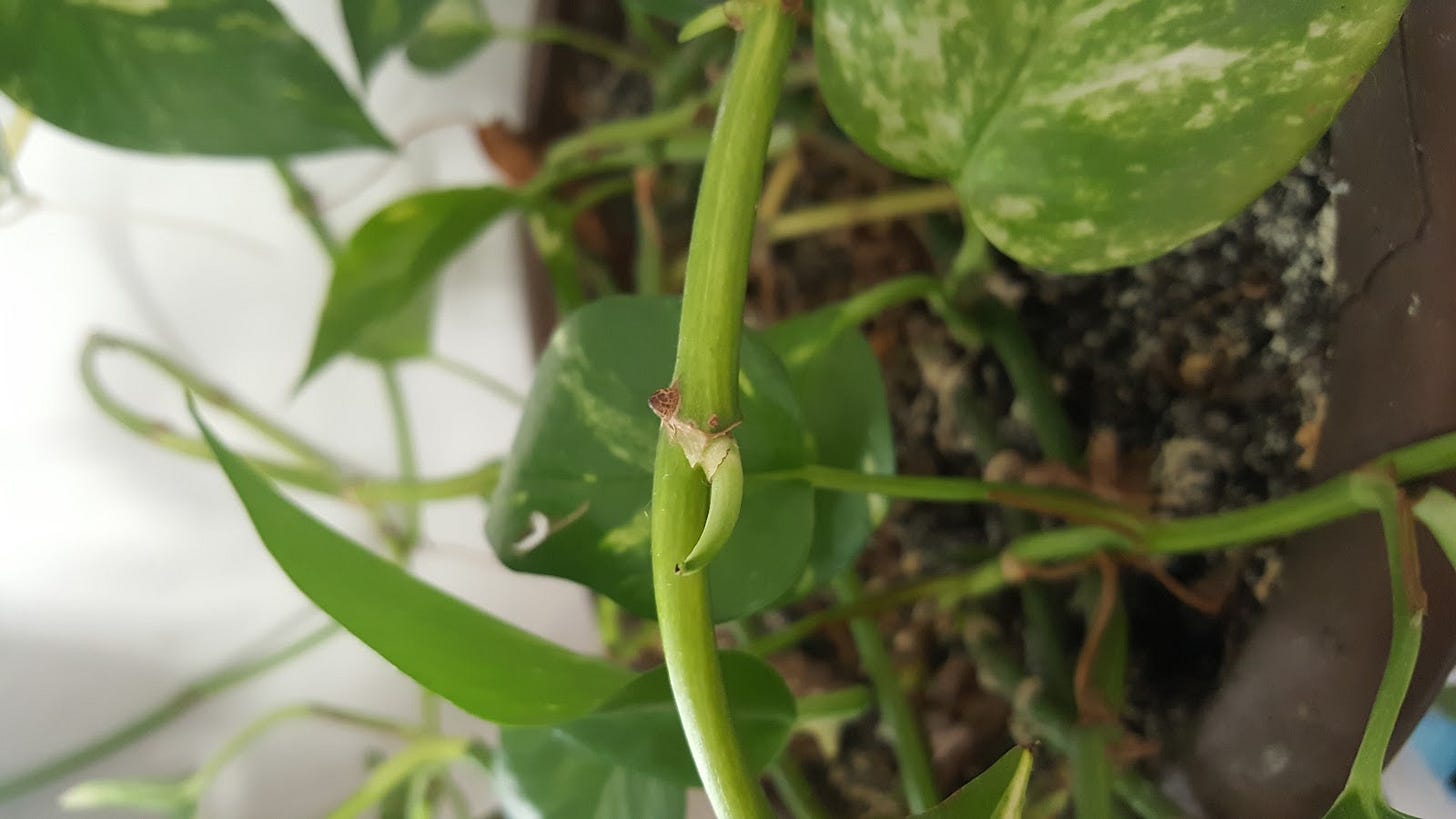Hello again! If you have been following on from the previous propagation posts, welcome back! If not, well.. read on for an easy method of propagation.
Propagation with stem cuttings is a popular and effective way of propagating plants. By taking a cutting from a mother plant and placing it in water or rooting medium, you can stimulate the growth of new roots and shoots.
When to do Stem propagation?
For house plants, this can be done at most times in the year, due to the inside environment facilitating germination. For woody plants, this can only be done during autumn or more dormant stages of the yearly cycle.
Mediums for propagating:
- Water: A simple way to propagate is to place the cuttings in water. Place the cuttings in a clean glass of water and make sure that the nodes (where the leaves attach to the stem) are submerged in the water. Keep the glass in a bright place but out of direct sunlight and change the water every few days. After a few weeks, there should be new roots and shoots on the cutting.
- Rooting in growing medium: Another propagation technique is to root the cuttings in a growing medium such as perlite, vermiculite or sphagnum moss. Take the cuttings and remove the lower leaves, leaving only a few leaves at the top of the cutting. Then moisten the growing medium and place the cuttings in the substrate. Cover the cuttings with a clear plastic bag to keep them moist and place them in a brightly lit place, with no direct sunlight.
Process of Propagation by Stem Cutting:

- Find a node, these look like brown lumps on the stem of the plant.
- Sterilise your knife and hands!!
- Cut a few centimeters below the node, and make sure to have a larger proportion of stem above the nodes. It is always best to have at least one leaf on the cutting, two or three is optimal.
- Fill your container with filtered water, sphagnum moss, or chosen medium (tap water in cities can have minerals detrimental to plant growth).
- Place your nodes in the water, ensure that no leaves are under the water line.
- Place in a bright and warm place. Wait for a few weeks to see some root growth.
Types of Stem Cuttings:
End cuttings: End cuttings are taken from the top of the plant, just below the growing terminal. These cuttings usually have new leaves and a thin, flexible stem. End cuttings are suitable for plants that grow vertically, such as English ivy or mint. They are often used to propagate indoor plants.
Example – Philodendron, Monstera
- Cut a 10-15 centimeter section of the end of the stem. Cut just below a node, ensure the final bud of the piece is intact on the other end of the cutting, this allows for accelerated growth for the cutting.
- Remove the lowest leaves that would be submerged or touching the medium.
- Ensure the cutting can support itself in the medium.
Medial cuttings: They are taken from the middle part of the plant. These cuttings usually have mature leaves and a thicker, stiffer stem. Terminal cuttings are suitable for plants that grow horizontally, such as strawberry or thyme. They are also a good choice for plants that have a dense, compact growth, such as rosemary or lavender.
Example – String of Dolphins
- Cut above a node (either a root or leaf), and cut again 10 centimeters below on the stem, below another node. Leaving a 10 centimeter cutting with nodes on either end.
- Place horizontally on a rooting medium, ensuring at least one of the nodes is touching the medium, you can clip it to make sure nodes touch the medium.
- Place in a bright and warm place. Wait some weeks for growth.
Cane cuttings: (plants with cane-like stems): Cane cuttings are taken from the base of the plant, where the stem is thicker and woody. These cuttings are suitable for plants that have strong and stiff stems, such as bamboo or climbing roses. Cane cuttings are more difficult to propagate than end or terminal cuttings, but can produce stronger, healthier plants.
Example – Yucca, Dieffenbachia
- Make a 5 centimeter cutting, with at least two nodes on. Ensure that the cutting is sterile by placing the cut ends in activated charcoal, this will act as a natural fungicide.
- Let the cutting dry for some hours.
- Place cutting horizontally in the medium, at least half of cutting should be submerged. Ensure the nodes are pointed upwards.
- Place in a warm, light place, and wait for the roots to form.
Hope this gets you ready for all the #plantswaps that are coming up this Spring. Please write to us, if you need any direction or guidance.
Plant love
Planteka
